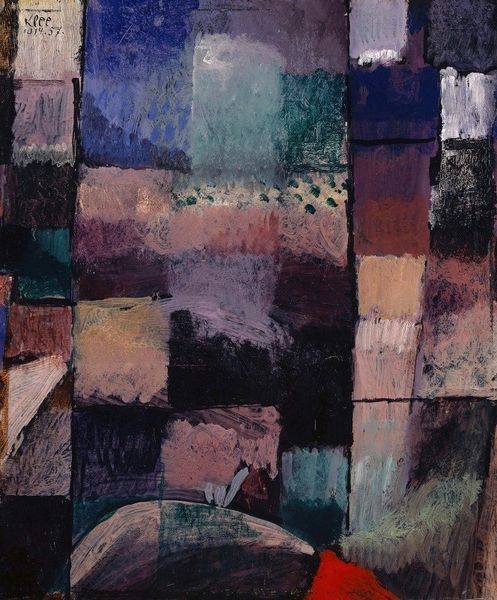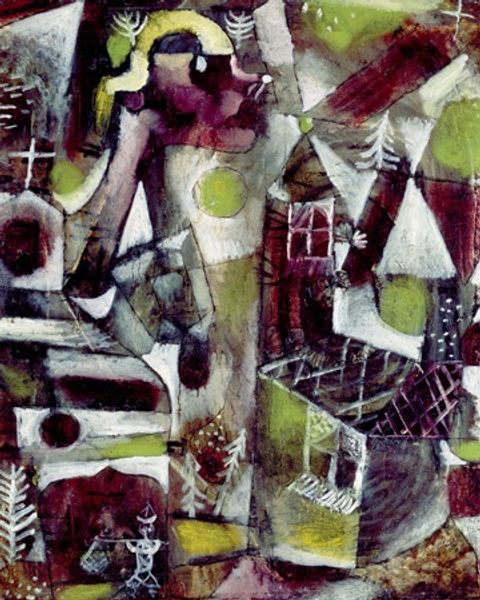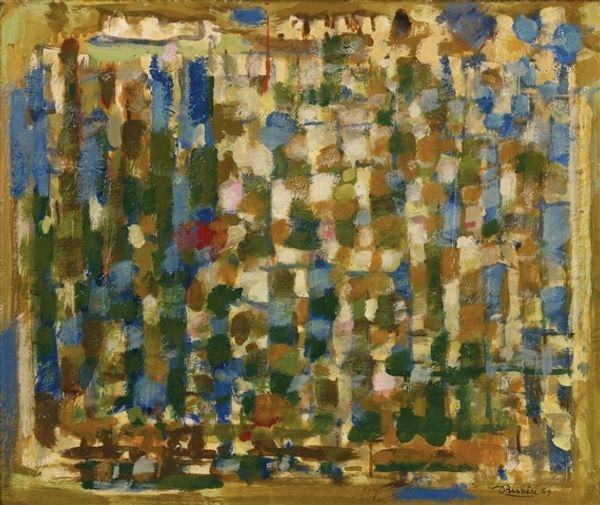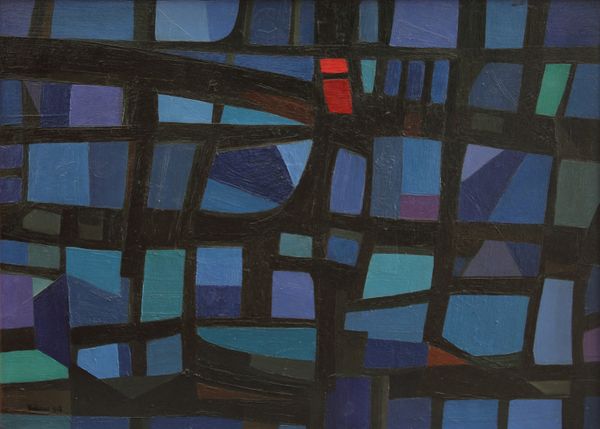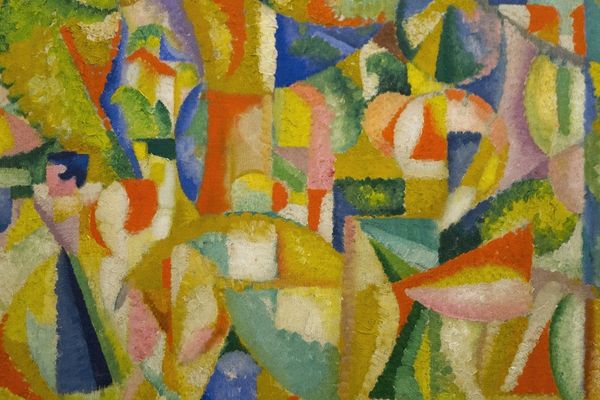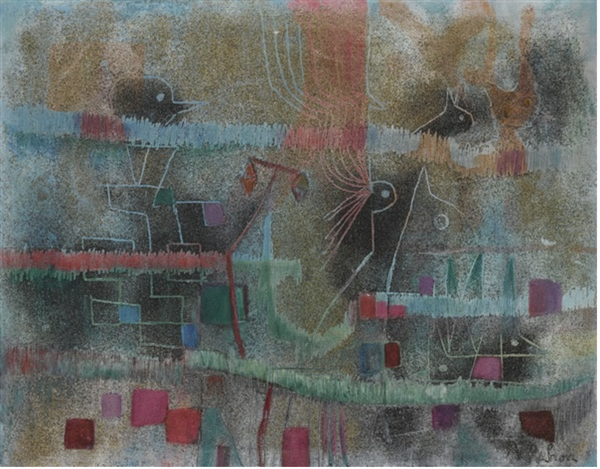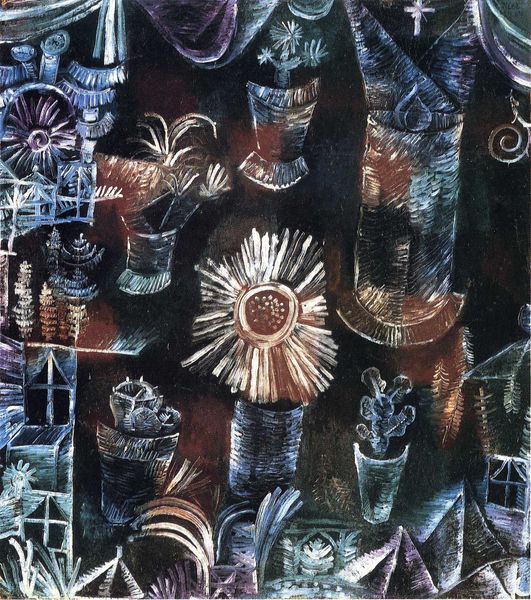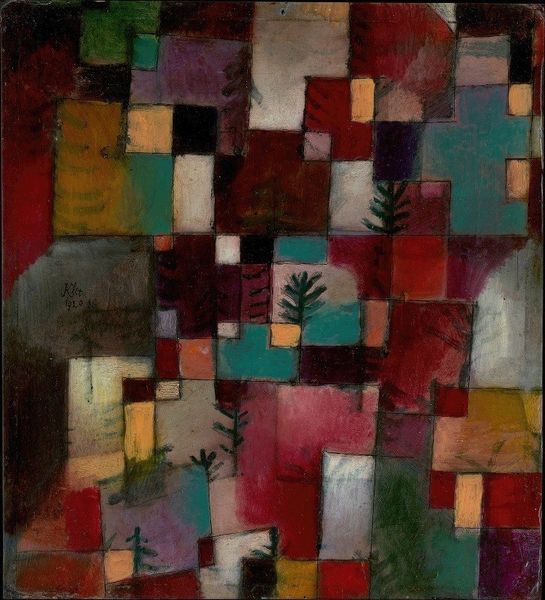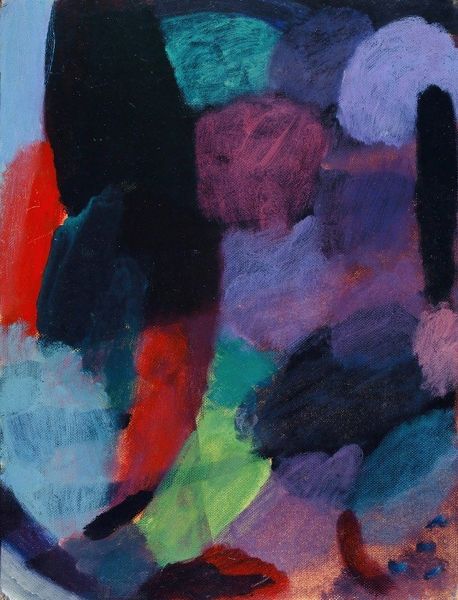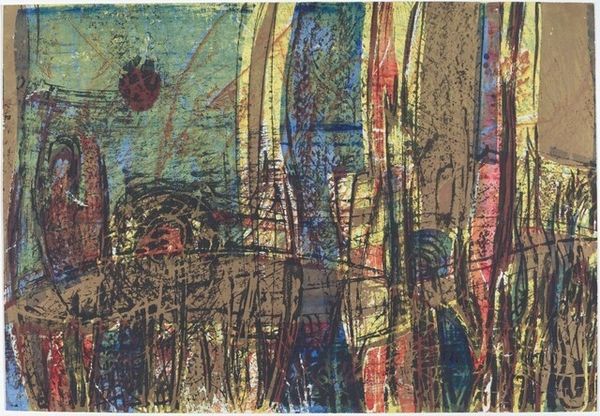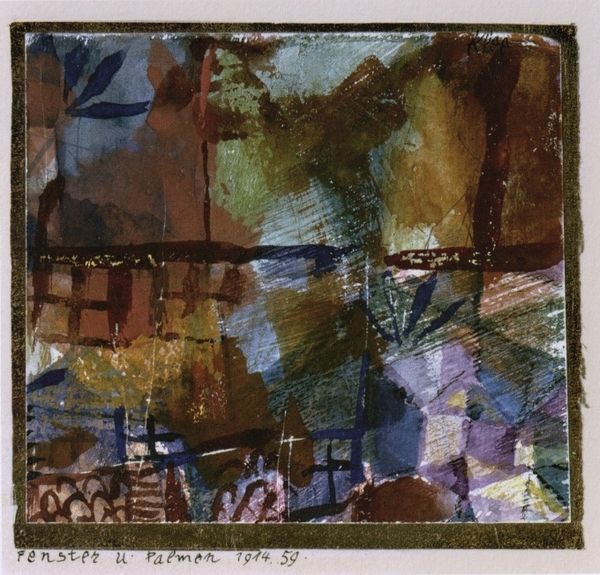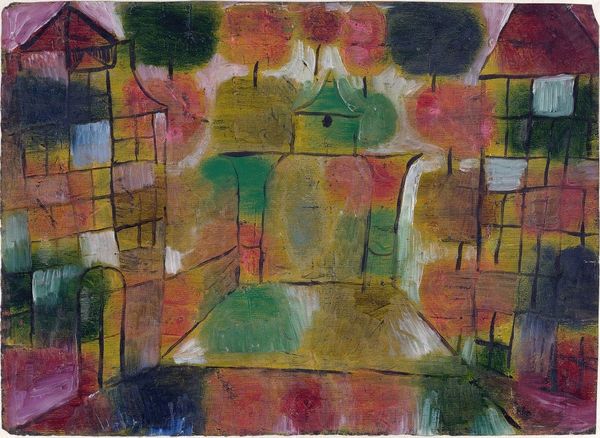
tempera, painting
#
tempera
#
painting
#
landscape
#
geometric
#
expressionism
#
modernism
Copyright: Public Domain: Artvee
Editor: We’re looking at Paul Klee's "Terraced Garden," created in 1920, using tempera. The overall effect is…well, quite somber, wouldn’t you agree? It’s all muted blues and greens. What can you tell us about the materials used and the making of it? Curator: Let’s consider that tempera was often associated with craft, even decoration, rather than the "high art" of oil painting in 1920. Klee's choice challenges that hierarchy, wouldn’t you say? Tempera dries quickly, allowing for layers but also demanding immediate decisions, forcing the artist to confront the materiality head-on. What do you observe about the process based on its visual characteristics? Editor: Well, the colors are quite matte, almost chalky. It’s interesting how the individual brushstrokes aren't really visible. How does that relate to the period's wider art production methods, if at all? Curator: The period was marked by mass production in other sectors. Look at the repetitive geometric forms that make up the garden. One could argue this mimics the alienation of labor found in factories, where individuality is surrendered to a repetitive task. Even in creating what is supposedly "nature," the mode of production seems to overwrite any pure idea of landscape, do you see what I mean? Editor: I hadn’t thought of it that way, but now that you mention it, there’s a kind of mechanized feeling to the landscape itself. Like even nature has been assembled or manufactured. Curator: Exactly! Consider where Klee sourced his materials: the pigments, the panel, even the brushes. Were these mass-produced? Locally sourced? These questions open up further avenues to explore how the social context informed even the very means by which this work came into being. Editor: That definitely gives me a whole new way of looking at it. Thank you! Curator: Likewise, it highlights the relationship between art and its means of creation.
Comments
No comments
Be the first to comment and join the conversation on the ultimate creative platform.
